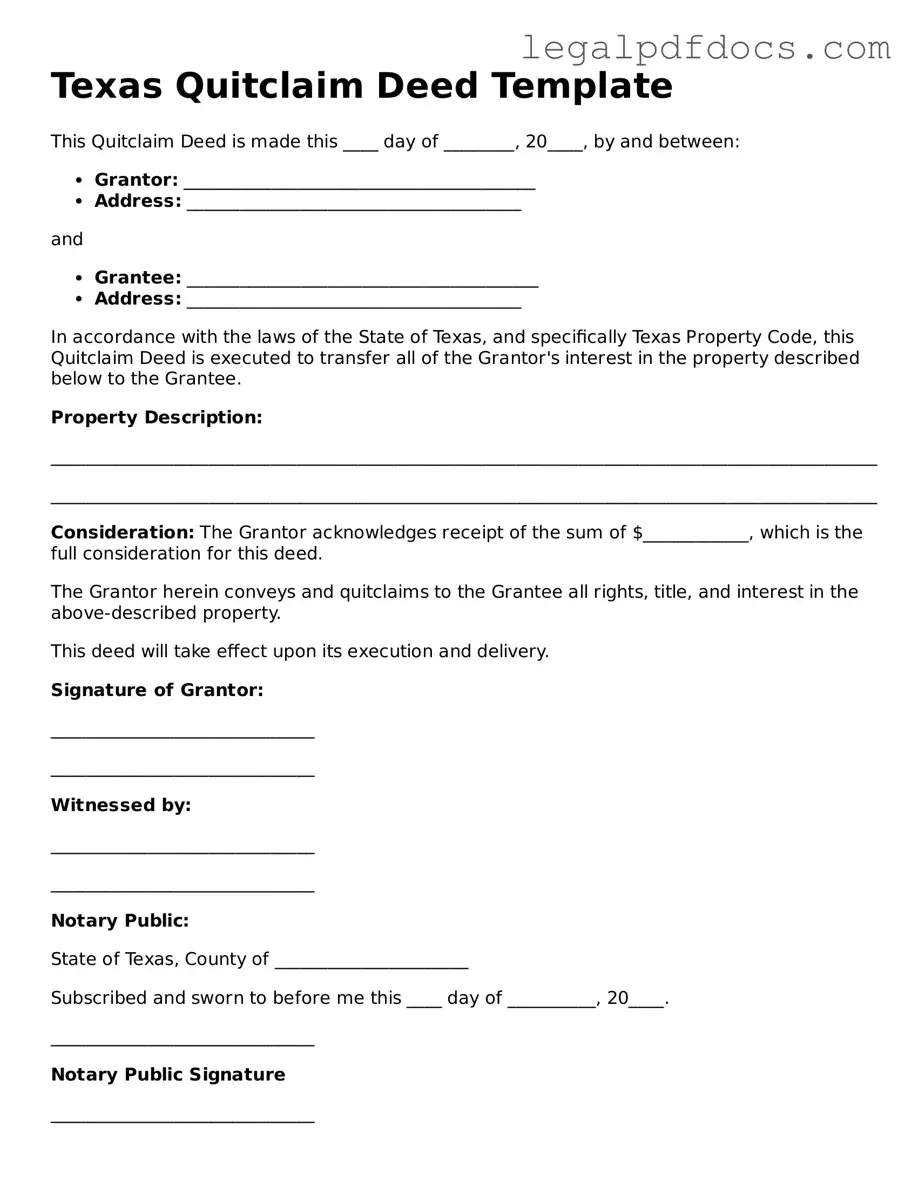In the realm of real estate transactions, understanding the tools at your disposal is crucial, and the Texas Quitclaim Deed form stands out as a significant instrument for property transfers. This form allows a property owner, known as the grantor, to transfer their interest in a property to another individual or entity, called the grantee, without making any guarantees about the title's validity. Unlike other deed types, such as warranty deeds, a quitclaim deed does not provide any warranties or promises regarding the ownership status of the property. This means that if there are any claims, liens, or other issues with the property title, the grantee accepts the property "as is." The Texas Quitclaim Deed form is often used in situations where the parties know each other well, such as family transfers, divorce settlements, or to clear up title issues. While the process may seem straightforward, it is essential to ensure that all necessary information is accurately filled out, including the legal description of the property and the names of both the grantor and grantee. Additionally, the form must be properly executed and filed with the county clerk to complete the transfer legally. Understanding these aspects will help individuals navigate the complexities of property transfers in Texas more effectively.
